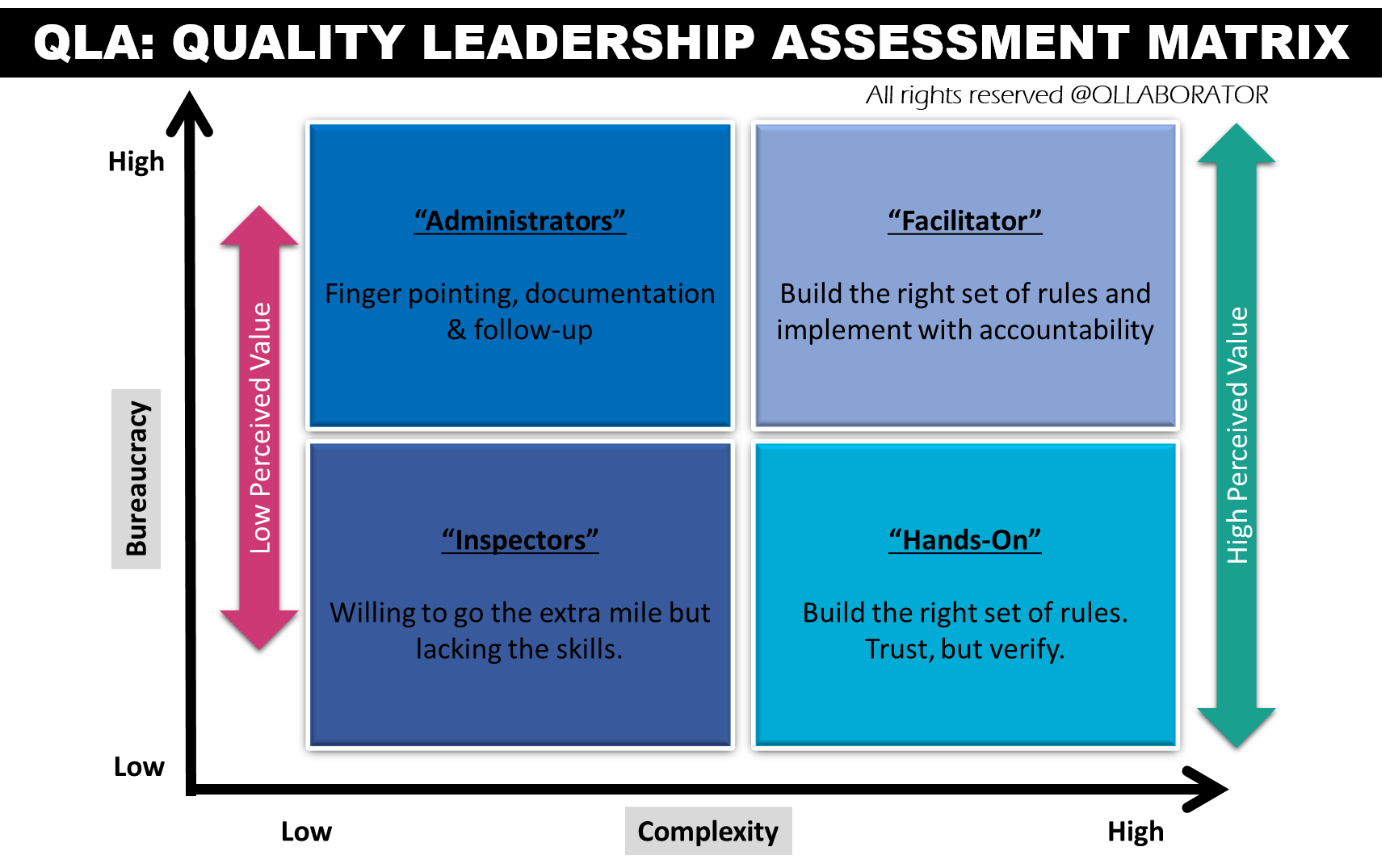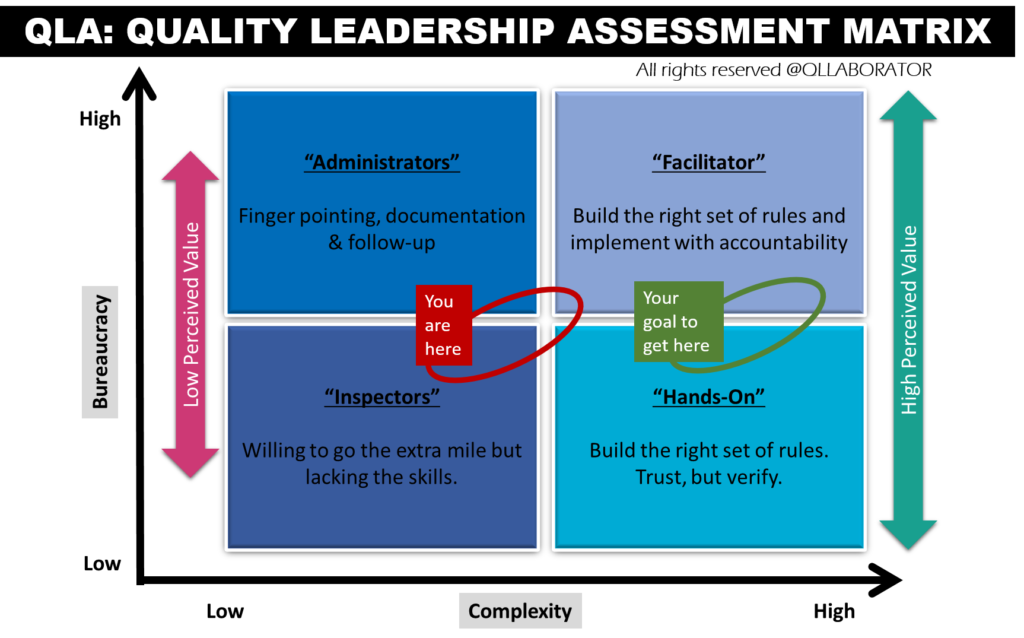
The Four QLM Quadrants That Will Make You Rethink Your Strategy for Quality
If you are reading these lines, it meant that you are actively looking for ways to improve and scale up your quality system. That is a great start; you should pat yourself on the back. After all, even the longest journey starts with a single step. However, deciding to start this journey is the simple part. After making this initial commitment, you “only” need to understand where you are heading. Alternatively, in other words, what good looks like when it comes to Quality?
Take a minute to reflect on this question. You would be amazed at how many people don’t know how to answer it. Usually, they can point out what they want to move away from, but may not have a clear view of what is the best path to move forward. That was a struggle of mine for a while until I figure out exactly what the future state of Quality should look alike. Once I set it as my northern star, it was easier to follow the road. Simple logic, right? Once you have discovered what good looks like, you can use it as an example to follow, and continue your journey with greater confidence and ease.
With this piece of content, I am sharing with your a secret process from my mentorship program. Why am I doing it? Because I would like to ease your way, to save you endless trials and errors, by introducing you to the QLM, an acronym stands for Quality Leadership Assessment Matrix. The QLM captures four types of the core leadership style of quality systems. Each style captures different behaviors, and it quite easy to estimate where your organization is at the moment. Although life (or business) is not black or white, and you probably demonstrate different styles of leadership throughout your day, there is a dominant type that characterizes your team.
This Quality Leadership Assessment Matrix will put a mirror in front of you and will help you to understand better how others perceived you – a good starting point. Even more than that, it enables you to mark your final destination. You will not have to explore where to get, but how to get there. After you asses where you currently, you can choose your future state and learn about the behaviors associated with it. Imitating actions and building the right skills is so much easier than re-inventing the wheel.
The Four Quadrants of The Quality Leadership Assessment Matrix
The Administrator
High bureaucracy, Low complexity
The Administrator tends to engage with simple bureaucratic activities that not require particular expertise and not perceived as adding value to the organization. As the name suggests, they are mostly involved in the formal, documentative aspect of Quality. They are best known for highlighting gaps and ask OTHERS to fix them. They will keep followup one actions for progress, but will not guide one through the process. They are the ones to identify an opportunity and make much noise while kicking off a significant improvement project. However, their idea of improvement is to establish, measure, and follow up an additional Indicator – all the other associated tasks are on others. “Administrator” has few interfaces, most of them are shallow. Typically, although not necessarily, team members traveled in the organization and landed in a quality team after fulfilling other roles, without a formal background or experience in Quality.
The Inspector
Low bureaucracy, Low complexity
The inspector is willing to go the extra mile to achieve better Quality but equipped with a minimal arsenal of tools to accomplish it. The focus of a team with a dominant “Inspector” leadership style is mostly on Quality Control, multiple inspections & peer review. It’s not unusual to see triple and even quadrate manual checkpoints for the same element. Therefore, they not perceived as adding significant value but being rewarded for trying. Eventually, in spite of the goodwill, the “Inspector” is reducing efficiency and lacking a systematic approach toward problem-solving. Every customer complaint or near-miss will end up with an additional line to a checklist somewhere. After a few years, the operational team finds themselves with long and tedious lists that impossible to follow, which eventually will lead to additional complaints. So what the inspector do? You get it right, add one more inspection point, to be on the safe side.
The Facilitator
High bureaucracy, High complexity
The “Facilitator” is best known for creating a set of rules, standards, and supporting documents, customized for the business needs, for literally every element across the organization, from initial phases of design, through purchasing, production, inspection, and support. Not sure how to execute a task? You don’t even need to ask. The “Facilitator” already craft a simple process to share the information, tailor-made to one needs, in a way that is easy to follow and apply. They are very knowledgeable, familiar with families of standards, certifications, and every lesson learned from the industry for the last ten years. They know precisely how to convert this knowledge into a step by step instructions that (and this is extremely important) serves the business needs. Approach them with a request, and you made their day – they are thrilled from the opportunity to share their experience with others. They perceived as an authority, and as such, adding significant value to the organization and individuals. Every interaction is also a meaningful learning experience; hence, people approach them voluntary.
The “Hands-On”
Low bureaucracy, High complexity
The “hands-on” quality leadership style is as much comprehensive, thorough, and remarkably knowledgable as the “Facilitator” is, with a significant differentiator. While the “Facilitator” builds and counts on people’s accountability to execute, the “Hands-On” Quality team will trust but verify. “Hands-On” are usually walking in front of complex tasks and processes. However, no matter how complicated the job is, they will find a way to verify it executed in a current manner. This makes their job very versatile, as they are effectively dealing with the multiple facets of Quality across different areas
Use the Quality Leadership Assesment Matrix as a self-assessment tool
Now that you learned to know the Quality Leadership Assesment Matrix, you can use as it a self-assessment tool. Circle down where you think you are now and choose where you would like to be a year from now. You are going forward; it’s only a question of building the skills and follow a path that paved before.


